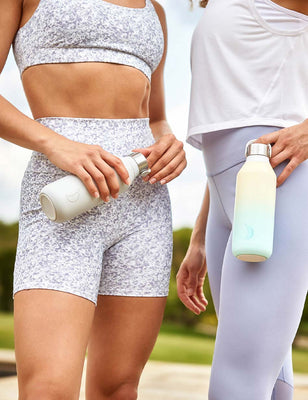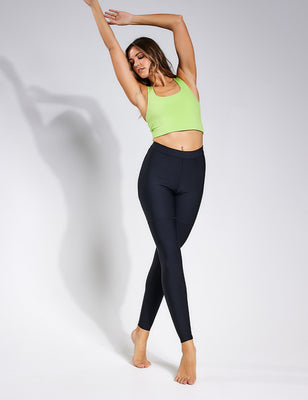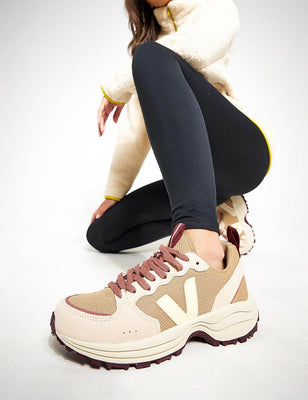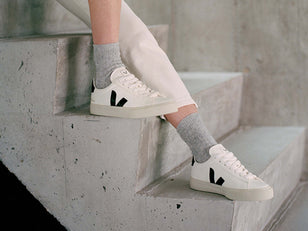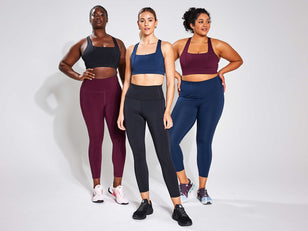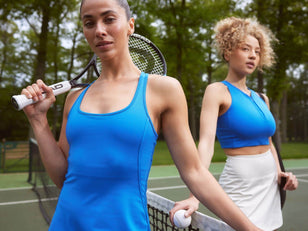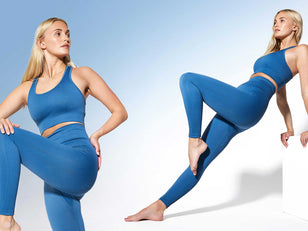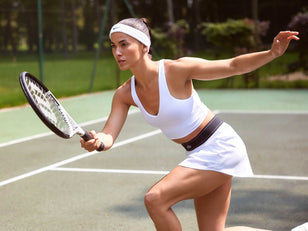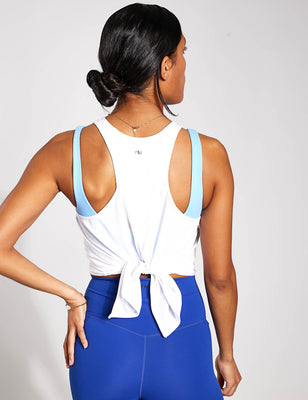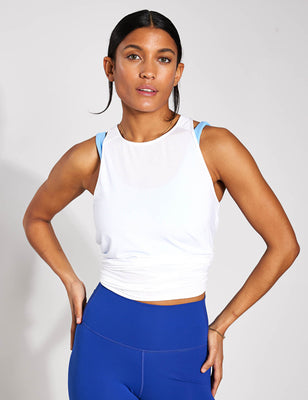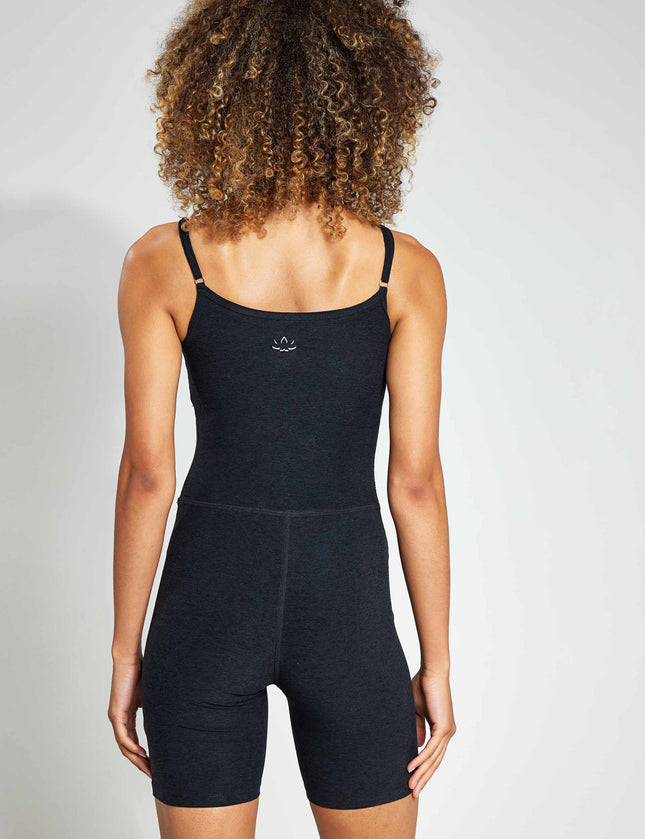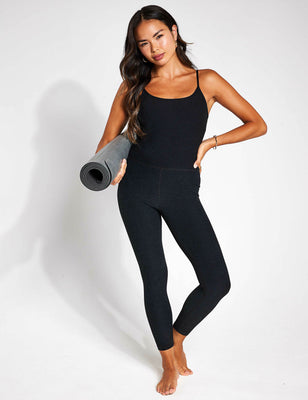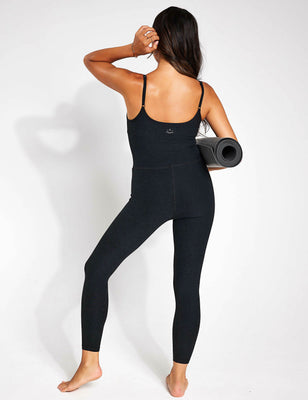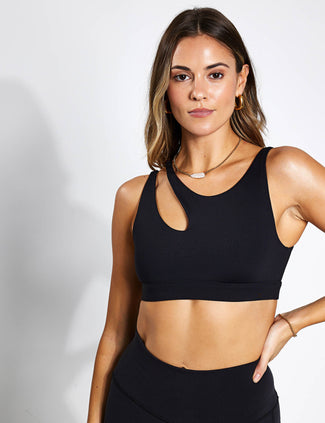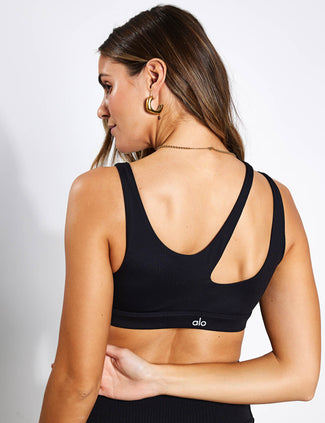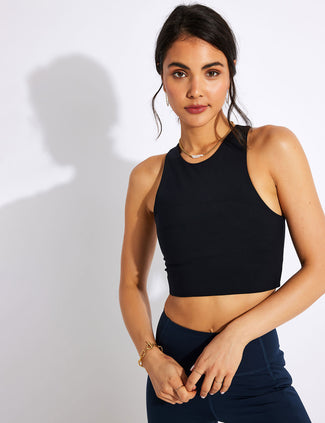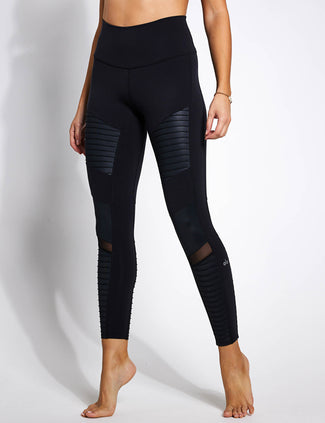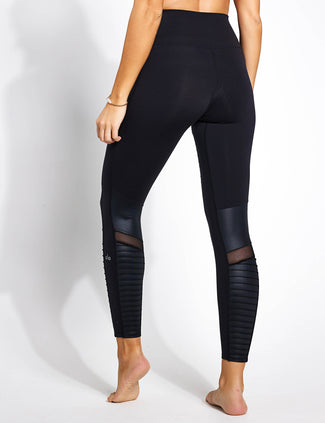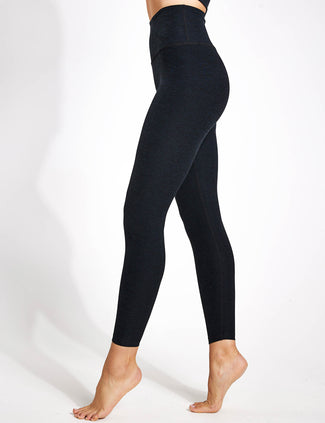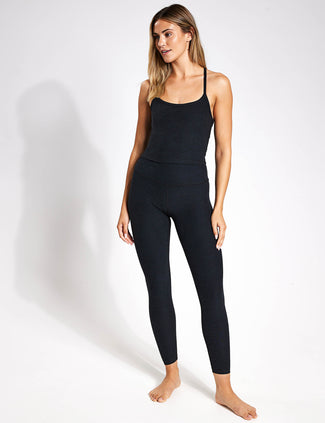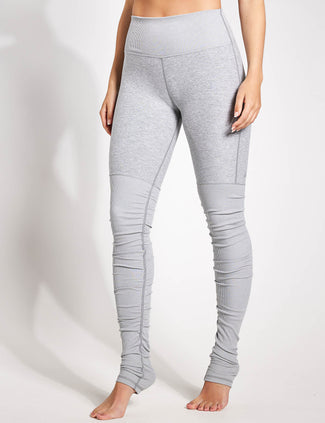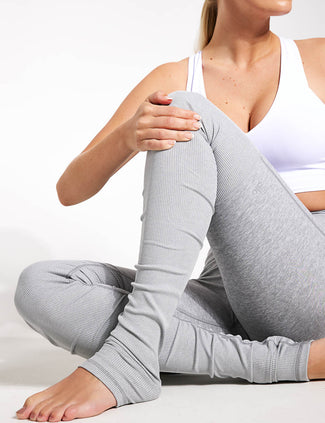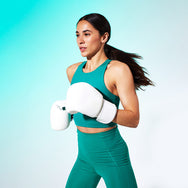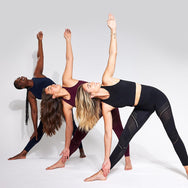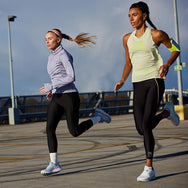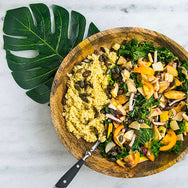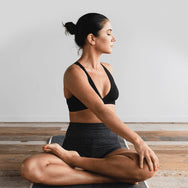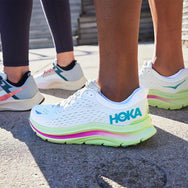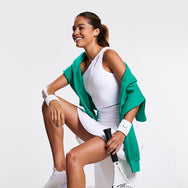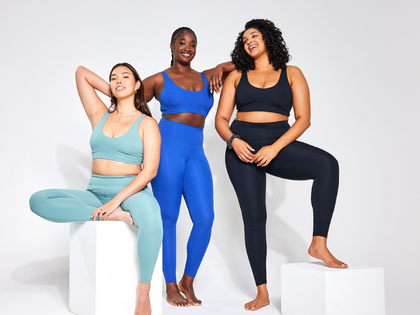Reformer Pilates is fast becoming the go-to class if you're looking to strengthen and sculpt your perfect body. The practice has received particular press attention this year, with personalities from newlywed Megan Markle to professional World Cup football players singing its praises. With a focus on resistance and alignment, this 20th century concept of exercise is undoubtedly challenging for both the body and the mind. The whole workout is done on a reformer machine - a sliding metal bed with springs and pullies, which adds intensity to the exercises through resistance. The equipment might look more like a torture tool from the 19th century than the basis of a good sweat session, but fear not, it's a more straightforward piece of equipment than it first looks!
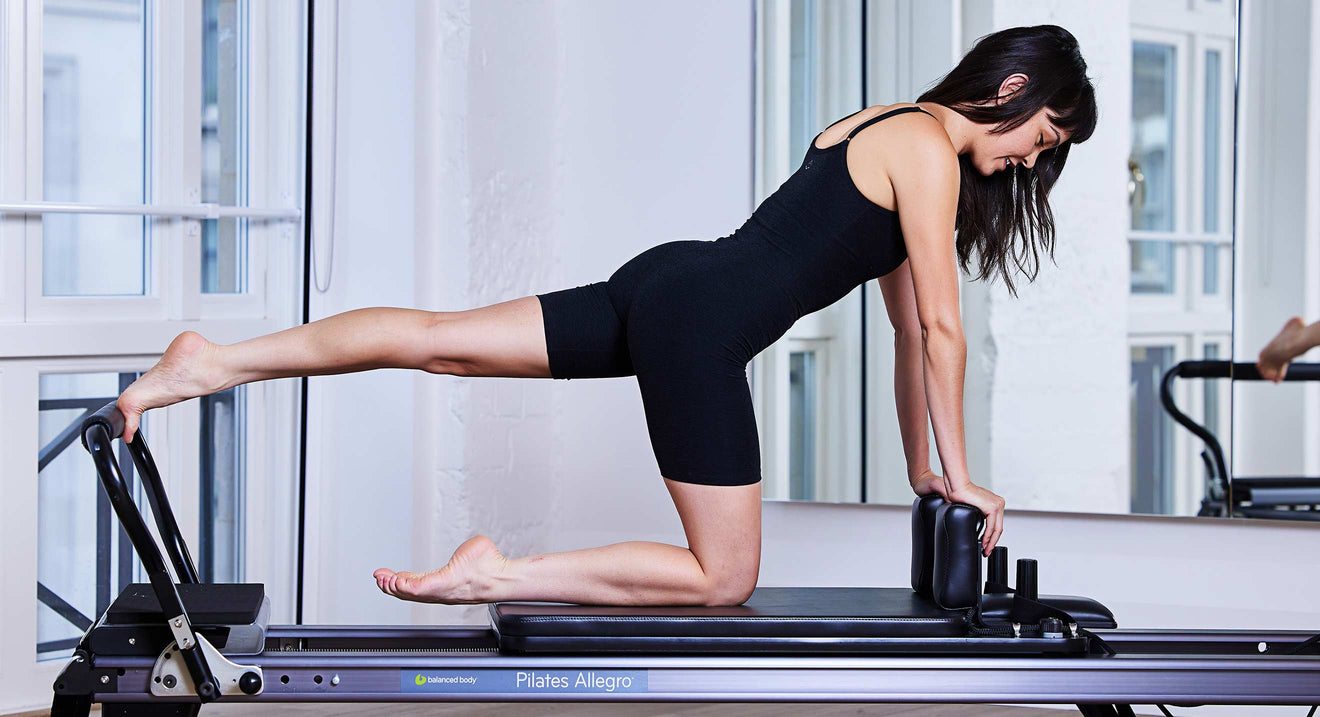
Discover our Pilates Clothes Collection > Pilates, and the reformer equipment, has been around in its earliest forms since around 1915 thanks to the German-born exercise guru Joseph Pilates. Throughout his life, Joseph had dabbled in all kinds of different disciplines of exercise. From bodybuilding as a teen, to gymnastics, yoga, diving, and even becoming a professional boxer, he'd tried it all. In the early 20th century he began experimenting with a new type of mat-based exercise and while working as a nurse, he came up with the idea of the reformer. He experimented with springs attached to a hospital bed to create a resistance-based exercise, hoping it would help patients recover faster. Years later, while living in New York he collaborated with Rudolph Laban - the world famous dancer and choreographer - and what we know as modern day pilates was born. After opening the first studio in New York with his wife, the idea spread and soon well-known dancers flocked to study pilates from the expert. Initially called 'Contrology', the concept of pilates focused on using the mind and breath to control the muscles. Just like today, it centered around core movements, alignment of the spine, and strengthening the deep abdominal muscles. Do you like to come prepared? Try out these top pilates exercises before going to your first class.Where did Reformer Pilates come from?
After walking through the studio and catching a glimpse of the somewhat confusing looking reformer, try to resist the urge to run out of the door. First things things, the instructor will explain how the reformer works, what each strap and bar is for, and how to change the springs. Adjusting the springs changes the level of resistance on the moving platform. So for example, certain exercises to target say your legs require a higher level of resistance than those for your arms. But each time the exercise changes, the instructor will tell you whether to alter your springs. And if the exercise is too tough, you can always choose to lower the resistance yourself. The loops are there for either your hands or feet, depending on the exercise, and often there’s a bar too to assist with stability. All classes and studios will differ, but a typical Reformer Pilates move is the runners lunge. Standing in a slight lunge with one foot on the stationary platform at the front, the other foot pushes the moving part of the bed backwards against the resistance of the strings. Repeating this movement slowly and with control, it won't be long before your muscles start to burn. Generally, Reformer Pilates classes are taken at a slow pace and to the point of fatigue (expect to feel your muscles shake!), in a bid to build strong but lean muscle by increasing the time under tension. Thanks to the tempo and resistance, even the simplest of moves feel much tougher and targets muscles you might not normally reach. So whilst it might not seem as feisty as a HIIT class, the control and precision required will still see that you work up a sweat. In most classes, one exercise will follow straight into the next, like a continuous yoga flow, and after 45 minutes, you'll be more than ready for the cool down.What to expect from your first class
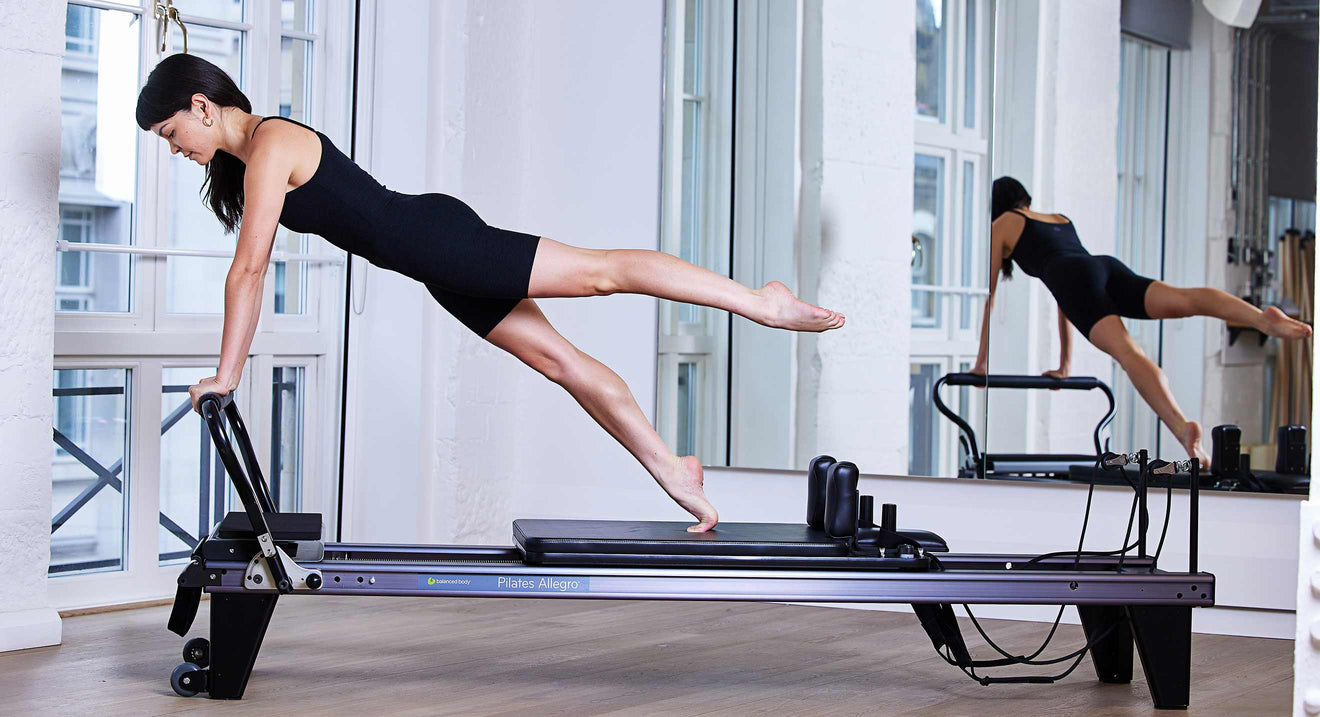
For reformer pilates, freedom of movement is key. You want to be able to exercise comfortably and without any restrictions so steer clear of running shorts or big, baggy tops. Instead, choose leggings or close-fitting shorts and a stretchy top. During an intense session, reformer pilates can get pretty sweaty, so opt for breathable fabrics to stay cool and comfortable. You'll find some great options via our dedicated Pilates Clothing collection. As you'll be getting into a variety of positions and potentially going upside down, it might be worth considering some high waisted leggings, for full coverage and comfort. Many studios also require those doing Reformer Pilates to wear grip socks to avoid your feet slipping while on the reformer.What should I wear?
In London, our favourite Reformer Pilates include Frame, Tempo and Ten Pilates. Most Reformer studios offer a beginners class, so make sure you sign up to a few of these first. And when you’re ready to take your Reformer Pilates to an intermediate or advanced level, we can’t get enough of Bootcamp Pilates, Power Reformer at Frame or one of Lagree Studio’s killer sessions! Check out our guide to London's top reformer pilates classes. If you're already a fan of yoga or Pilates, reformer is the perfect way to up the intensity of your workouts, perfect your alignment, burn fat and help build a really strong core. And by taking the pressure of your joints and increasing flexibility, it's also a great option for runners and HIIT lovers.Where should I go?
Verdict:












